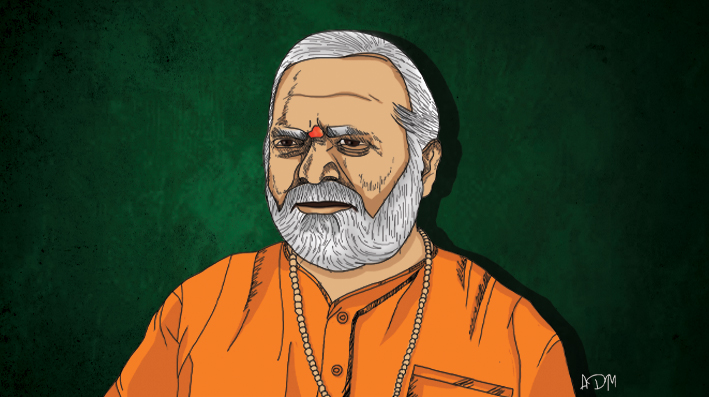With friends like Yogi Adityanath, opinion-makers in Shahjahanpur believe the law can’t touch this Swami
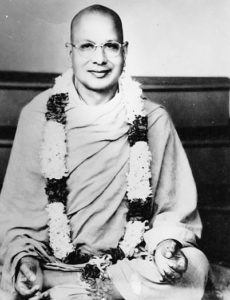
Soon after Independence, Sukhdevanand set up the Daivi Sampad Sanskrit Mahavidyalaya in Shahjahanpur. By the time he passed away in 1965, he had established three educational institutions in Shahjahanpur, three ashrams (in Shahjahanpur, Rishikesh and Haridwar), a “Hindu Jain temple” in Pittsburg, US and a Swami Sukhdevanand Trust in 1962. The trust was given tax-exempt status by the government of India.
After his death, Swami Dharmanand, Sukhdevanand’s disciple from Bulandshahr, succeeded him. In 1991, Dharmanand passed away. He was succeeded by a 44-year-old Hindutva firebrand from Jaunpur called Swami Chinmayanand. Born as Krishna Pal Singh in 1947 in UP’s Gonda district, Chinmayanand had apparently left home when he was 20 to learn lessons in spirituality and religion from Dharmanand.
Unlike his predecessors, Chinmayanand had stakes in matters both sacred and secular. In the mid-70s, he had participated in the JP movement and rallied against the corrupt state government in Bihar and eventually against PM Indira Gandhi, who had in the past shared the stage with Chinmayanand’s guru and his associates. He was also associated with the Vishwa Hindu Parishad (VHP).
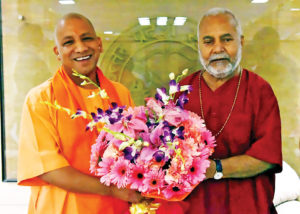
In Parliament, Chinamayanand was a consistent voice for the Mandir. In this, he had the company of his friend, Gorakhpur MP Ajay Bisht, popularly known as Yogi Adityanath. They had argued that the construction of Ram Mandir should be a parliamentary responsibility. “There was always a temple there, there is a temple there, and only a temple can come up there,” the two had proclaimed in the Parliament one day in December 2000. In later years, when tensions arose between the Vajpayee-led faction and the VHP- and RSS-oriented factions in the government, Chinmayanand was made the Minister of State in the Home Ministry in May 2003 to appease the VHP.
Chinmayanand’s friendship with Adityanath has a history. During the Ram Janmabhoomi movement in the 1980s, Chinamayanand had worked shoulder-to-shoulder with Adityanath’s guru, Mahant Avaidyanath, the then head priest of the Gorakhnath Temple. The two had founded the Ram Janmabhoomi Mukti Sangharsh Samiti. In the years that followed, Chinamayanand had managed the Shahjahanpur branch of Adityanath’s saffron militia, the Hindu Yuva Vahini. A visitor in Chinmayanand’s schools and colleges will find plaques citing that Adityanath inaugurated an auditorium or a department on this day in that year. Even after he became Chief Minister of Uttar Pradesh, Adityanath came to Shahjahanpur in 2018 to inaugurate a school building in the Shri Daivi Sampad Inter College (SDSIC).
In Shahjahanpur, Prasad told Newslaundry that Chinmayanand’s presence in Parliament bore fruit for his colleges and schools in Shahjahanpur. “He and other political actors in the late 1990s helped in the allocation of funds that developed his institutions here,” Prasad said.
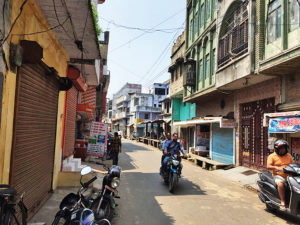
In a cramped and creaky Shahjahanpur, Chinmayanand’s schools and colleges provide a sprawling contrast: big red and white buildings that overlook well-trimmed and lush green lawns with statutes of a goddess here and a saint there. The classrooms have high-ceilings and large portraits of a composed and stiff Chinmayanand and his gurus hang everywhere in the campus. The buildings have quotes by Tagore, Vivekananda, Einstein and others painted in small rectangular boxes. The colleges have their own hostels. The Mumukshu Ashram, where Chinmayanand puts up when he’s in town, is adjoined and connected to the campus.
The medium of instruction, one professor tells me, is “English but Hindu medium”. The professor, who has taught at the Swami Sukhdevanand Post Graduate College since 1986, says that although students are given necessary education in English, they are encouraged to disavow “Western manners”.
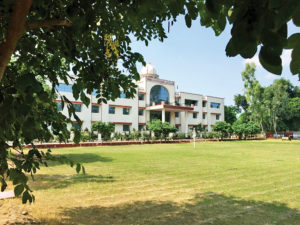
“Students at Swamiji’s schools and colleges don’t say ‘Hello’ or ‘Good morning’ to the teachers, they touch their feet. Girls here wear salwaar and kameez. We let them know when we think their dressing is improper, like if they wear shirts and pants. During functions, students don’t just plug and play Bollywood songs. We encourage them to play bhajans and nationalist songs on musical instruments. They don’t even get on the stage before taking its blessings. Those who don’t are either those who have gotten out of hand or Muslims,” the professor said.
The professor then smiles, draws forward, and says: “We don’t force them, we only persuade.”
Although a not-for-profit, the institutions enjoy a good deal of affluence. Every year, the SSPG hosts an international seminar that is attended by speakers from Africa, the US and Europe. There have been nine so far. There is also a week-long annual Mumukshu Mahotsav in February and March where cultural activities and Ram Kathas are organised. (DJ and Bollywood music is barred in these events on Chinmayanand’s personal instructions.) There is a Janmashtami festival too, and every institution celebrates its own their Founder’s day.
“Swamiji addresses the students in 90% of the events. He is very attached to children. If someone comes to him with an invitation, he always says yes and shows up,” the professor tells me.
Descriptions of humility and meekness work best when they’re latched onto those who enjoy power. This is true for Chinmayanand in Shahjahanpur.
Professors, journalists, politicians and intellectuals that this correspondent met in the city hardly had a critical word to utter about their Swami. When a local friend would call and ask them whether they would meet a Delhi journalist to talk about Swamiji, the person on the other side would draw a long pause and then give a reluctant yes, or a no.
“The businessmen here are his friends and many are trustees of his institutions. Journalists here go to his events and receive his gifts. They send their children to his school. Over and above that, he is very close to Yogiji. This man has economic, social and political capital,” a Shahjahanpur-based journalist said on condition of anonymity.
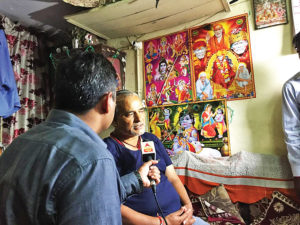
Chinmayanand has made good use of this capital. During the 2014 Lok Sabha elections, he was one of BJP’s star campaigners in Uttar Pradesh. He had canvassed funds for the party, decided the distribution of tickets and publicly endorsed the controversial “Ramzaade vs haramzaade” jibes by Sadhvi Niranjan Jyoti. He had also tried to get his friend Asaram Bapu off the POSCO hook by allegedly fabricating documents to discredit the minor who had been assaulted by Asaram.
In 2003, Chinmayanand had added a fifth educational institution in Shahjahanpur in his kitty. He started the Swami Sukhdevanand Law College (popularly known as the SS law college). An administrator at the institution told Newslaundry that the college was set up to meet a crying need. Young men and women in the town who wanted to study law had to either go 80 kilometres away to Bareilly or 175 kilometres away to Lucknow.
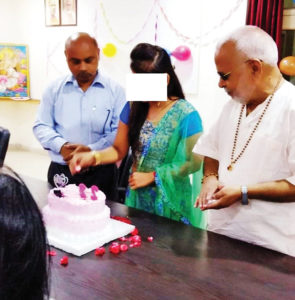
“The Shahjahanpur Bar hardly had any lawyers,” the administrator said. “But now more than half of the lawyers there are our graduates,” he beamed. So Chinmayananand had legal capital too.
Aura shattered
On August 23 this year, one of the students of SS Law College, Shahjahanpur, a 23-year-old woman who had finished her LLB degree earlier this year and enrolled for LLM, posted a video on Facebook. In it, she claimed that a “big leader of the saint society” in Shahjahanpur who had “destroyed the lives of several girls” had been threatening to kill her family. She sobbed as she spoke, tears rolling down her eyes.
There was hardly any mystery about who the woman was referring to. “He is very powerful and the DM [district magistrate] and SP [superintendent of police] can’t act against him,” she said, adding that she had evidence against him.
In Shahjahanpur, Chinmayanand’s associates told Newslaundry that the accuser was one of Chinmayanand favourites. She was a “disciplined” and a “brilliant” student. The Swami had even arranged a job for her at the law college’s library for Rs 7,000 a month. She was given a room in the hostel. A picture even showed Chinmayanand celebrating the woman’s birthday and standing beside her as she cut a cake.
The woman went missing the next day. In Shahjahanpur, at her old, small and crumbling home, her father told Newslaundry that when she had last come home on Rakshabandhan, she had warned the family about the risks to her safety. “She had kept her phone switched off a day before she came to see us. She lives in the college hostel. When we asked her about it, she said that if I ever keep my phone switched off for more than 4-5 hours, Papa, you should know that I’m in trouble,” he said.
According to the father, the SP displayed predictable behaviour. He said: “When we went to register an FIR against Chinmayanand, the SP asked me, “You should know what is good and bad. Do you realise who you are filing an FIR against?” In the FIR lodged on August 27, the woman’s father accused 72-year-old Chinmayanand of abduction and criminal intimidation.
In Shahjahanpur, the incident produced two types of responses. The common people would tell you that the Swami enjoyed local omnipotence and was capable of doing what he did. There was an acknowledgement of a darker side. Among the opinion-makers, that is, journalists and politicians, there was an instrumental silence about such an acknowledgement. The collective brainstorming in this circle was dedicated to how Chinmayanand will manage this problem, not whether he was the culprit.
“They all know he did it, but they will not dare to say it. They will keep showering praise on him and that’s that,” a senior journalist with a local paper told me.
What was uniform was the shaming of the woman and cheap gossip about her character and that of her family. In her neighbourhood, two young men sniggered when I asked them about her. “She has had many boyfriends,” they said. Snigger, snigger. “And she was anyway living with him (Chinmayanand) in the campus.” More sniggering. “The parents are to blame. If you keep a sweet outside, wouldn’t someone come and eat it?” Snigger, snigger.
Misogyny too is an industry in Shahjahanpur. What seems to trigger everyone is that the woman had been seen in Delhi with another man. During a conversation with the SSPG professor, a journalist associated with a national news agency told me that Swamiji should’ve kept a distance from women. “Women have become weapons these days, I keep a distance with them even at work. One doesn’t know what a woman will do,” he said.
“She is in it for the money. They are a poor family. They think they’ll slander Swamiji and get a luxury car,” said the professor.
Compromised media
“Journalists in Shahjahanpur are Chinmayanand’s patronised class. They will not and can not write against him,” said a journalist from a national magazine who boasts of writing against the Swami, even if it is from the safe distance of Lucknow.
Another senior journalist working for a national Hindi daily told this correspondent that “a lot of resources are being dedicated to divert this issue”.
And this was true. Journalists in Shahjahanpur hold Chinmayanand in high regard. Once, after talking to journalists about Chinmayanand at the bureau of a national Hindi daily, I was asked to meet the bureau chief on my way out. “So what did they say?” the bureau chief asked me. Before I could spin a remark about fangirling, he muttered: “Sab yahaan bhakt hai unke. Everyone here is his devotee.”
As the controversy trail-blazed through Shahjahanpur, Chin-mayanand was away in Haridwar, in one of the ashrams where Sukhdevanand once spent his meditative summers. He was in a state of maun vrat (a vow of silence), we were told.
After being spotted in Delhi on August 28, the woman was found in Rajasthan on August 30. There was a man with her, Sanjay Singh. The police took them to Delhi, where the accuser met her family, who had also been brought there from Shah-jahanpur. After she was produced in the Supreme Court on August 31, the bench said that she “doesn’t want to go back to Uttar Pradesh till she meets her parents here and after the meeting, she will make the decision on her future course of action.” The apex court ordered the UP government to shift her and her brother to another college, and constitute a Special Investigation Team (SIT) to probe charges levelled by her against Chinmayanand.
“He has raped me,” the woman revealed on September 9 with half a dozen mics hogging her face, which was draped almost entirely with a black dupatta. “He exploited me for over a year.”
“I have no problem answering questions but at least arrest him (Chinmayanand),” she added, her voice giving away anxiety and annoyance. “I was running for days, trying to save myself. The Shahjahanpur DM threatened my father…There is a threat from UP police.”
Conspiracy theory
Om Singh, Chinmayanand’s spokesperson, told Newslaundry that the woman’s claims were part of a conspiracy. “She has made three allegations so far and she’ll continue to add to it,” Singh said. “These people will soon be trapped in their own designs. They are out to extort and besmirch Swamiji’s name, but we have full faith in the judiciary. We’ll wait for the SIT’s report.”
According to Singh, Chinmayanand had received a text message soon after the woman’s video from August 23 went viral. The message said: “I have a video of all the things you do with girls. You play with their modesty and you like it. I’ll give these videos to the media. If you value your respect, then arrange for Rs 5 crore by evening, else I’ll hand the video to the media…Don’t try to be clever.”
The message was sent on Whatsapp from an unknown number. Chin-mayanand’s counsel, Om Singh, registered an FIR of August 25 alleging that the Swami was a victim of extortion. On August 31, the UP police said that Sanjay Singh was “one of the suspects in the extortion case” against the Swami. The woman has claimed that Singh is her “bhai”.
Murky history
On September 10, Amar Ujala reported that a “video of Swami Chinmayananda…is becoming public on social media” where he is “getting a massage from a student”. The video’s screenshots were posted on a website called bhadas4media, showing an old man lying completely naked and receiving a massage from a younger woman. “The student recorded Chinmayanand being naked on January 31 through a hidden camera fixed in her specs,” the article claimed. The video has not been authenticated yet.
In 2011, Chinmayanand had been accused of rape and kidnapping by a sadhvi in his ashram. Like in the latest case, he evaded arrest then even after a bailable warrant had been produced in his name. Last year, a report had noted that the “entire government machinery was trying to shield him” when the controversy propped up. The Swami’s accused and her husband had tried to confront him and the spat was caught on camera. But like a good friend, Chief Minister Yogi Aditya-nath had given orders to the state’s law and justice department to withdraw the case against Chinmayanad days after allegedly meeting him at his Mumukshu Ashram.
But the latest allegations have brought to fore a set of more complicated problems. The Swami’s latest accuser claims she has evidence against him. The national media has taken her side. A video claiming to show Chinmayanand with a student is doing the rounds on the internet and opinion-makers in Shahjahanpur are not sure how their Swami will get this monkey off his back. Will Chinmayanand, scion of a great sadhu tradition, lover of children, foe of Bollywood music and demolisher of the Babri Masjid, manage to get out of this unscathed?
www.newslaundry.com

